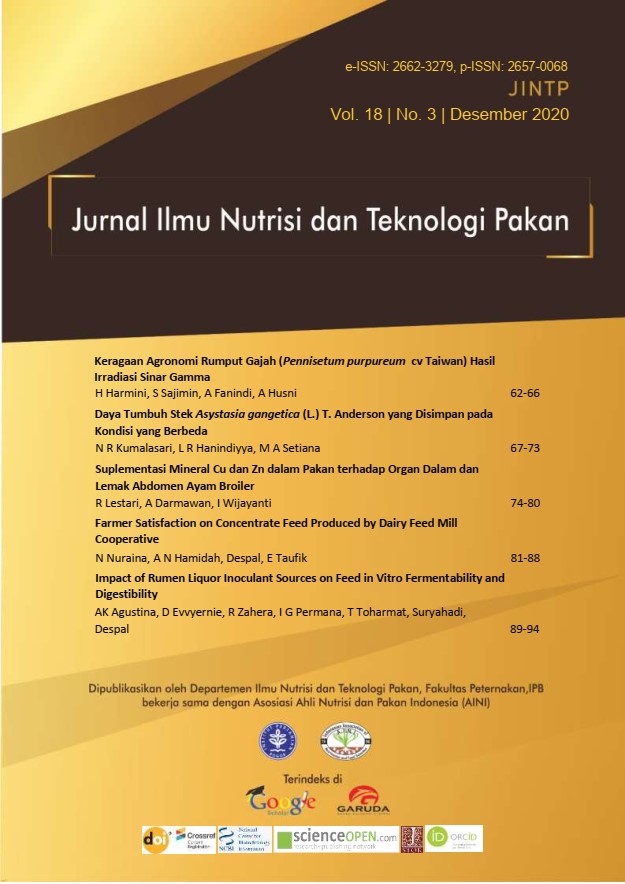Keragaan Agronomi Rumput Gajah (Pennisetum purpureum cv Taiwan) Hasil Irradiasi Sinar Gamma
The Agronomic Performance of Elephant Grass (Pennisetum purpureum cv Taiwan) Resulted from Gamma-ray Radiation)
DOI:
https://doi.org/10.29244/jintp.18.3.62-66Abstract
The objective of this study was to determine the agronomic diversity of gamma-ray at 50 Gray dose during the phase of embryogenetic callus in napier grass cv Taiwan. This research used a randomized blok design (RBD) of gamma-ray and without radiation elephant grasses (P. purpureum cv Taiwan). There were 51 numbers in irradiated elephant grass, each number three replicated and five plant per number each. Without irradiation control used elephant grass (P. purpureum cv Taiwan); there were 10 clumps in one block and each line number had been repeated three times. Gamma radiation showed no impact on plant height and stem weight (dry weight) at P>0.05, but had a significant effect on number of tillers, leaf length, leaf width, total weight, fresh weight, leaf (dry weight), weight of stem (fresh weight). Gamma ray irradiation selection does not have to generate high output but can be developed on sub optimal soil or extreme weather conditions such as tolerant felling, which requires less high plant.
Key words: diversity, forage, irradiation
Downloads
Downloads
Published
Issue
Section
License
The authors of the submitted manuscript have to understand and agree that the copyrights published are held by Jurnal Ilmu Nutrisi dan Teknologi Pakan. Copyrights includes rights in reproducing, distributing and selling every section of articles in all forms and media. The copyright transfer form is signed by the corresponding author. The author”
• Creative Commons Attribution (CC BY)
you are allowed to:
Share – copy and redistribute the material in any medium or format
Adapt – remix, transform, and build upon the material
for any purpose, even commercially.
The licensor cannot revoke these freedoms as long as you follow the license terms.
Jurnal Ilmu Nutrisi dan Teknologi Pakan (Nutrition and Feed Technology Journal)

This work is licensed under a Creative Commons Attribution 4.0 International License.


